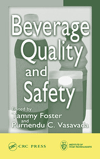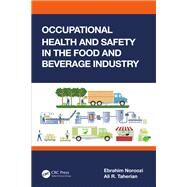FSMA takes a preventive approach to safety
Food Safety Modernization Act raises industry standards

Juices, alcohol and dietary supplements are largely exempt from new preventive controls rules in the Food Safety Modernization Act because they are already covered by other regulations, Hogan Lovells’ Joe Levitt says. (Images courtesy of Bolthouse Farms, Bacardi U.S.A. Inc. and Pyure Brands)
During the first quarter of 2013, the U.S. Food and Drug Administration (FDA) reported 316 food recalls, according to Stericycle ExpertRecall, Indianapolis. Whether as a result of contamination or labeling, allergens were the largest cause of the recalls, composing approximately 34 percent during the first quarter, the company reports. Foodborne bacteria, such as Salmonella, Listeria and E. coli, accounted for nearly one in four recalls during the quarter, and foreign materials in food products caused 13 recalls, it adds. Due to foodborne illnesses alone, approximately 48 million Americans become ill, 128,000 are hospitalized, and 3,000 die each year, according to data from the Centers for Disease Control and Prevention (CDC).
Furthermore, the last major update to the nation’s food safety laws was in 1938, according to an FDA presentation, and a lot has changed in the last 75 years. Today, food travels farther than ever to reach consumers; pathogens are changing, adapting, and sometimes becoming stronger and more difficult to kill; and people are living longer and with chronic diseases, making them more susceptible to foodborne illnesses, it adds. In the face of such food safety threats, President Barack Obama signed the Food Safety Modernization Act (FSMA) into law Jan. 4, 2011.
“The Food Safety Modernization Act was an outgrowth of the Bioterrorism Act of 2002, which was implemented to enhance the security of the people of the United States,” says Dave Loesche, industry business leader for food and beverage at Maverick Technologies, Columbia, Ill. “The Bioterrorism Act gave the FDA administrative authority to detain any food items they believed to be contaminated or otherwise identified as a potential security risk to public health. The FSMA was created to focus on preventing the causes of the contamination rather than responding to incidents where contaminated or potentially contaminated food items posed risks to the public.”
By being proactive instead of reactive with the FSMA, the FDA plans to strengthen the food safety system and better protect public health, according to its website. Proposed rules within the act will give the FDA more authority to enforce compliance in order to accomplish its food safety goals.
Gaining authority
Due to the FSMA, the FDA now has the authority to order a mandatory recall if it finds a serious health hazard within a facility and if the company refuses to recall the product voluntarily, explains Joe Levitt, partner at Hogan Lovells US LLP, Washington, D.C., and former director of the FDA’s Center for Food Safety and Applied Nutrition. Secondly, if a serious health hazard is found, the FDA has the authority to suspend a company’s registration, which would essentially shut that facility down, he says. For example, in November 2012 the FDA suspended registration for Sunland Inc., Portales, N.M., after finding Salmonella in its New Mexico processing plant. The company had begun voluntarily recalling products produced in its peanut butter plant in September 2012, according to Sunland’s website. The FDA reinstated the company’s registration before the end of the year, and its facility began test operations in March, it notes.
Another power gained by the FDA from the FSMA is reinspection fees, Levitt says. If the FDA conducts an inspection, finds significant problems, and issues the company a warning letter, then the costs of the government’s next follow-up inspection must be reimbursed by the company, he adds.
Manufacturers also will face more frequent inspections based on risk. Under the FSMA, all high-risk domestic facilities must be inspected within five years of enactment and no less than every three years thereafter, according to the FDA. Within one year of enactment, the FDA must inspect at least 600 foreign facilities and double those inspections every year for the next five years.
For the beverage industry, this means manufacturers will need to be as transparent as possible to the FDA during inspections, Levitt says.
“I think that most major beverage companies are going to find that their existing systems are largely compliant, so they’ll just have to make some tweaks,” he explains. “The biggest difference is not what they’ll have to do, but the high level of transparency they will need to provide to the FDA during inspections. All of their manufacturing records and their testing records, once the FSMA goes into effect, will all become available to the FDA during an inspection.”
Additionally, the FSMA will enhance the FDA’s ability to track and trace products in the event of a recall. For this reason, food and beverage producers will want to automate as much of their data collection as possible to maintain operational efficiencies, Maverick Technologies’ Loesche notes.
“Technology available today allows manufacturers to identify process issues before they lead to large-scale recall events,” Loesche says. “Reporting tools are also available to provide the data needed to comply with regulatory agencies. Mock recalls give manufacturers the opportunity to test their ability to respond in a crisis.”
In order to help manufacturers comply with FSMA regulations, equipment manufacturers are working with their customers to incorporate features and functionalities into their equipment that enables them to monitor the production process in real time and collect the data needed to support regulatory reporting, he says.
New rules
The FDA announced two proposed rules on Preventive Controls for Human Food and Standards for Fresh Produce Safety in January 2013. Juices are exempt from most of the FSMA rules because they already are covered under hazard analysis critical control points (HACCP) regulations, Hogan Lovells’ Levitt explains. Similarly, alcohol and dietary supplements already are covered by other regulations and, therefore, do not need to be duplicated under the FSMA preventive controls rules, he says. The proposed rule for fresh produce exempts fruits and vegetables when they are to be used in beverages such as juices that have a “kill step,” he adds.
However, the proposed rule for Preventive Controls for Human Food will impact many other beverage categories. Under this rule, facilities would be required to implement a written food safety plan that focuses on preventing hazards in foods, according to the FDA. This might include process controls, food allergen controls, sanitation controls, a recall plan, and a supplier verification program. Updated good manufacturing practices also are included in this proposal to clarify that certain existing provisions requiring protection against contamination of food also require protection against cross-contact of food by allergens.
Certain beverage categories will have a leg up in coming into compliance, Levitt says. Companies that process Grade A milk and milk products will benefit from already having had to comply with the Pasteurized Milk Ordinance (PMO), which is administered by each state, he explains. Likewise, bottled water companies have long been subject to a dedicated set of good manufacturing practice (GMP) regulations as well as an extensive set of FDA standards of quality, he adds.
The next proposed rules will be the Foreign Supplier Verification Program, Preventive Controls for Animal Food, and Accredited Third Party Certification. “The Foreign Supplier Verification Program will affect the beverage industry in terms of manufacturers providing greater oversight of their suppliers to be sure their suppliers are providing them safe ingredients,” Levitt says. Manufacturers will be held responsible for what their ingredient suppliers do, so the demands on ingredient suppliers will be higher than usual, he says. This will impact both domestic and international suppliers, he adds.
“The FDA worries a lot about ingredient suppliers because if one ingredient supplier sells ingredients that could be harmful — maybe it has Salmonella in it — it could affect dozens or even hundreds of products because they sell to so many different places; whereas if a manufacturer has a problem, it only affects their products,” he explains.
Because 15 percent of the food Americans eat is imported, according to the FDA, the FSMA is taking a closer look at foreign suppliers and manufacturers and holding importers accountable for verifying that these suppliers have adequate preventive controls in place to ensure that the food they produce is safe. Additionally, the FSMA will establish a program through which qualified third parties can certify that foreign food suppliers comply with U.S. food safety standards. Furthermore, the FDA now has the authority to require that high-risk imported foods be accompanied by a credible third-party certification or other assurance of compliance as a condition of entry into the United States, it adds.
Once the final regulations for FSMA proposed rules are published, large manufacturers typically have one year to comply; small businesses are given two years to comply; and very small manufacturers have three years to comply, Maverick Technologies’ Loesche says.
Abiding by the rules
Despite the FDA’s attempts to be as transparent as possible, many processing companies are unaware of how the changes will affect them, according to a survey by iRely LLC, Fort Wayne, Ind. Of the survey respondents, 71 percent agreed that the new FSMA regulations would directly affect their operations, but when asked which one requirement would affect them most, the most common answer was “unsure” with 47 percent. In addition, 44 percent of respondents listed “uncertain or unclear implementations” as their biggest concern about the new FSMA rules.
Furthermore, many companies said they do not have plans to upgrade technology and/or resources in order to meet FSMA regulations. Seventy-six percent of respondents also said that they were not planning to increase their staff or resources to address FSMA requirements, despite the FSMA’s more stringent traceability requirements and demand for more frequent mock recalls. Companies might be holding off on these investments because they are focusing instead on cutting costs or improving revenue, iRely says. Or, their systems might already be compliant under the FSMA. According to the survey, 76 percent of respondents said they will not start using an automated enterprise resource planning (ERP) system because their current system is already compliant.
As FSMA rules go into effect and manufacturers adapt, both low- and high-risk foods and beverages will be held to a higher standard, Hogan Lovells’ Levitt says.
“Any product, if not made well, could present a problem for consumers,” he says. “There are many parts of the food industry that consider themselves lower risk than others, but I think the idea here is to put into place a basic set of requirements that would apply to everybody as a baseline and then some products, because of the nature of their risks, would have to do more.”
Although categories like juice have been looked at most closely in the past, the FSMA is aiming to raise the rest of the industry to a higher level of scrutiny, Levitt says.
Related: Food safety focus on packaging
Looking for a reprint of this article?
From high-res PDFs to custom plaques, order your copy today!










